Femia > Health Library > Pregnancy > Pregnancy health > Implantation cramps: What they feel like, when they occur, and how long they last
Implantation cramps: What they feel like, when they occur, and how long they last
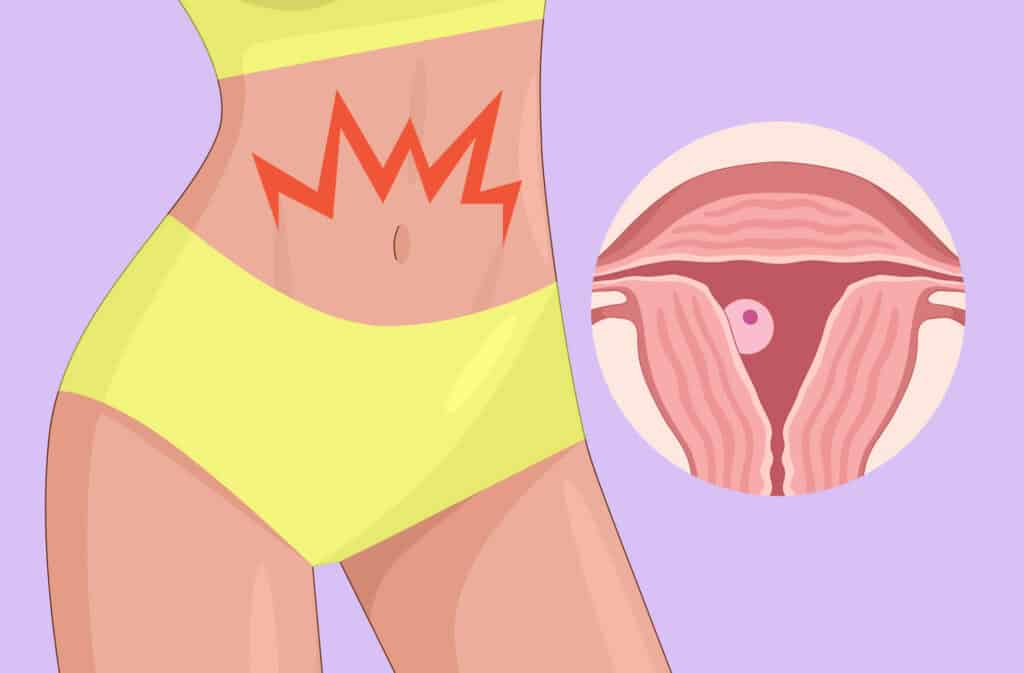
- Updated Feb 28, 2025
- Published
CRAFTED BY HUMAN
Crafted by human At Femia, we provide accurate and up-to-date information at every stage of your journey, from trying to conceive, pregnancy and postnatal support. All content is created by a real person based on in-depth research and own professional experience. Femia ensures that you will receive expert advice, strict accuracy and a personalized approach from our authors/medical experts. Learn more about our editorial policy.
FACT CHECKED
Fact checked At Femia Health, we maintain the highest standards of editorial excellence in delivering content focused on helping you conceive, guiding you through pregnancy, and supporting you postpartum. Explore our content review principles to learn how we ensure the accuracy and quality of our health and lifestyle tips for every stage of your journey.
Mild cramping noticed close to your period could be implantation cramping, an early pregnancy sign. Implantation pain is milder than period cramps, with a dull aching felt in your lower pelvis. Cramping because of implantation is usually felt a week to ten days after fertilization, right around the time your next period is due.
After fertilization, your egg takes about a week to travel to your uterus. Once there, it slowly burrows into the uterus, forming a protective housing for your baby for the remainder of your pregnancy. Implantation cramps, a dull aching pain in your lower pelvis, may be felt during this process. This pain is intermittent and frequently lasts for a couple of days. Spotting may also be seen along with the implantation cramping, which might make you dismiss this early pregnancy sign as period cramps.
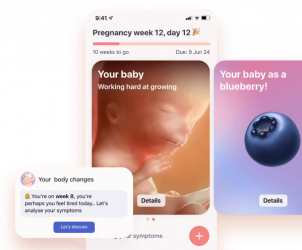
What are implantation cramps?
During ovulation, your egg is released into the fallopian tube, where it might encounter sperm. If fertilized, the egg then travels to your uterus for implantation, where luteal-phase hormones, progesterone, and estrogen, have primed your uterus to receive it.
Since your fertilized egg burrows into only a small part of your uterine lining, the cramping is mild and, for some women, not even noticeable. In comparison, period cramps are more intense, because your whole uterus contracts to shed the lining of your uterus.
The exact cause of implantation cramping is unknown. The process of fertilized egg implantating into the uterus itself could be a reason. Other possible causes could include the elevation in progesterone during early pregnancy or the release of prostaglandins (also responsible for period cramps) during implantation. Implantation happens in a pro-inflammatory state, which elevates pain mediators in your body, sometimes heightening your sense of these cramps.
👉Find out more: How long does it take to get pregnant after sex: Understanding the timeline
Where do implantation cramps hurt?
Implantation pain is felt in your lower pelvis. It can be located to one side or can be felt like a dull ache in your lower abdomen.
Cramping may also radiate to your lower back or slightly down your thighs. The intensity of your pain can be higher immediately during implantation, subsiding a few hours or a few days later. Where you feel implantation pain may also change over the few days you experience it.
If you notice pain progressively worsening in a particular location in your abdomen, coupled with signs such as bleeding, fever, or vomiting, consider checking it with your doctor.
What does implantation feel like?
Implantation cramps, when present, are similar to but milder than period cramps. Abdominal cramps are also a common symptom of premenstrual syndrome. Since 48% of women experience PMS during their reproductive years, implantation pain can often be mistaken for PMS.
Another factor to consider is the implantation window. Since it can vary, you may feel cramping at a different time than expected after fertilization.
Can you feel implantation?
Most women do not experience any pain or cramping during implantation. Since cramping is often mild, it is frequently not noticed or passed off as PMS cramps.
However, women have reported higher pain perception in their premenstrual and menstrual phases. Implantation pain is felt in your luteal phase—a time in your menstrual cycle during which you are more likely to feel cramps. Additionally, women who have elevated pain sensitivity are more inclined to sense implantation cramps than those who have higher thresholds for pain.
@femia.fertility 5 stages of implantation: - fertilization - cell division - moving to the uterus - implantation - placenta formation Only after these stages your pregnancy officially begins. #implantation #implantationprocess #pregnancy #ttccommunity #ttcjourney #fertilityjourney #fertilization #greenscreen #3dmodel ♬ original sound - Femia fertility app
When do implantation cramps occur?
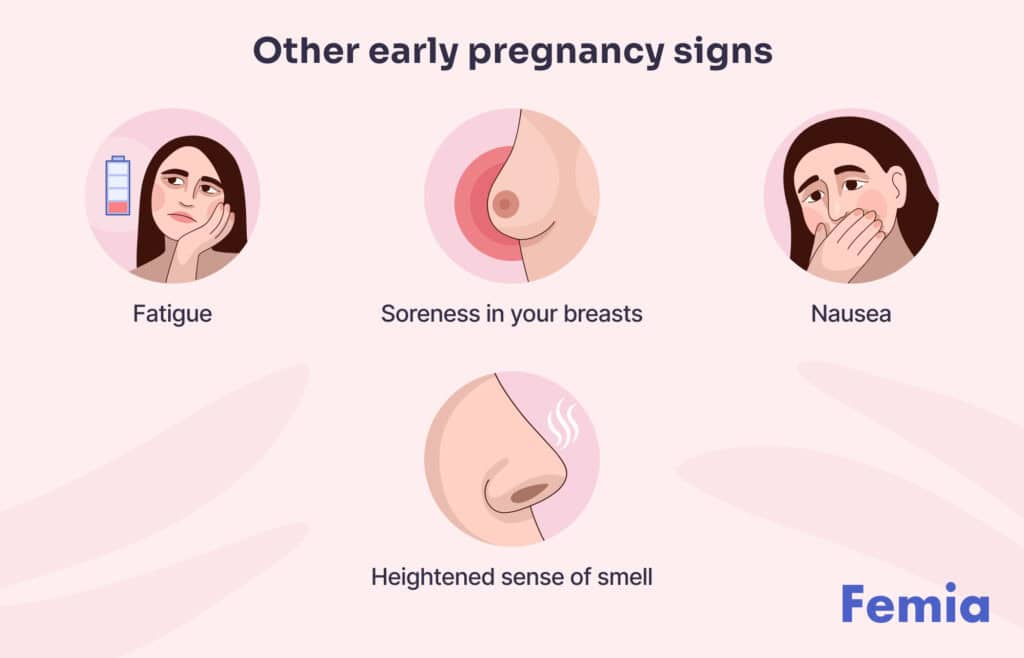
Implantation takes place approximately 6–10 days following ovulation, which is around day 20–24 in a 28-day menstrual cycle. Following such cramps, you would usually expect your period to start in a few days. However, the implantation cramps you experience may coincide with other early pregnancy signs as well, such as:
- Nausea
- Fatigue
- Soreness in your breasts
- Heightened sense of smell
While similar to symptoms you may have previously experienced with PMS, implantation cramping and early pregnancy symptoms can sometimes feel exaggerated in comparison.
Cramping can also coincide with spotting or pinkish discharge, another indicator of implantation. Vaginal bleeding is noticed in 15–25% of early pregnancies, of which implantation bleeding is a likely cause.
Experiencing pain that progressively worsens, coupled with heavy bleeding, especially when you feel you are pregnant, should prompt a check-in with your doctor. Ectopic pregnancies or early pregnancy miscarriages can cause significant cramping that starts mild at first.
How long do implantation cramps last?
Cramping following implantation can last for a few hours to a couple of days. Implantation pain subsides on its own in a day or two, feeling negligible within the first few hours after you feel the first twinge. As we have seen above, hormones may be responsible for the cramps you experience during implantation, resulting in cramps you feel intermittently and in different areas over a few days.
Pain that doesn’t subside in a couple of days and increases in severity might suggest a cause other than implantation. Your healthcare provider can help you with any concerns you may have relating to pain and other symptoms you experience during implantation.
Ovulation cramps vs. implantation cramps: How to tell the difference?
Both implantation cramps and ovulation cramps feel about the same and last for a day or two. Similarly, implantation pain and ovulation cramps can both be followed by spotting. The main difference between the two is when and where you experience them.
If you regularly track your menstrual cycles, you are probably aware of your fertile window, when ovulation is most likely to occur. You also are likely to track the signs telling you that ovulation is around the corner—for 40% of women, this includes mild cramping. Ovulation cramps are distinctly felt on one side of your lower pelvis, coinciding with the ovary from which your egg is released. Ovulation pain is usually felt around days 12–14 in a 28-day cycle, roughly the middle of your menstrual cycle.
Implantation cramping, on the other hand, is felt closer to your period date. Since it takes a week to ten days for your fertilized egg to travel and implant in the uterus, cramping is sensed roughly within the last week of your menstrual cycle. You are more likely to mistake implantation pain for period cramps than ovulation cramps, specifically because of this timing.
👉Find out more: Ovulation cramps vs implantation cramps: How to spot the key differences in pain, bleeding, and timing
When to take a pregnancy test
While implantation cramping, especially if you are monitoring signs of early pregnancy, is a unique indicator, your pregnancy test may still come back negative.
Pregnancy tests work by detecting the pregnancy hormone hCG in your blood or urine, which starts being produced when implantation occurs. So, you will need to wait a little while for the hormone to reach detectable levels before taking a test, otherwise you may get a false negative.
The earliest recommended time to take a pregnancy test is the day your period is supposed to start. However, if you feel that you are pregnant and are experiencing symptoms of early pregnancy along with implantation cramps, a blood test from your healthcare provider may be able to confirm the pregnancy earlier.

Questions from the Femia community
Is it possible to mistake menstrual cramps for implantation cramps?
Yes. Implantation cramps occur close to your next period, and some women mistake this for their usual PMS or period symptoms.
Will I feel implantation cramps only on one side?
You can feel implantation cramping anywhere in your lower abdomen. It can be experienced throughout your lower pelvis or restricted to the side where implantation has taken place. The pain may also radiate to your lower back and thighs.
Do all women experience implantation cramping?
The short answer is, no. Implantation cramps are an infrequently observed early pregnancy sign. Since pain is a subjective symptom, factors such as pain sensitivity and also ability to decipher implantation pain from other cramping should be considered.
The bottom line
While implantation cramps are a reassuring early sign of pregnancy, they are not always easy to sense and are often overlooked for PMS or period cramps.
Implantation takes place 6–10 days after fertilization. At this time, you may experience a mild dull ache in your lower abdomen or back. Implantation pain subsides on its own in a day or two.
Implantation cramps can be accompanied by other signs of pregnancy, such as nausea, fatigue, and mood changes. If your cramps worsen or you notice severe symptoms such as excessive bleeding, vomiting, or fever, be sure to check in with your doctor for personalized care.
References
- Sehring, Jacqueline, et al. “Human Implantation: The Complex Interplay Between Endometrial Receptivity, Inflammation, and the Microbiome.” Placenta, vol. 117, Dec. 2021, pp. 179–86. https://doi.org/10.1016/j.placenta.2021.12.015.
- Kim, Su-Mi, and Jong-Soo Kim. “A Review of Mechanisms of Implantation.” Development & Reproduction, vol. 21, no. 4, Dec. 2017, pp. 351–59. https://doi.org/10.12717/dr.2017.21.4.351.
- Direkvand-Moghadam, A., et al. “Epidemiology of Premenstrual Syndrome, a Systematic Review and Meta-Analysis Study.” Journal of Clinical and Diagnostic Research, Jan. 2014, https://doi.org/10.7860/jcdr/2014/8024.4021.
- Hellström, Birgitta, and Ulla Maria Anderberg. “Pain Perception Across the Menstrual Cycle Phases in Women With Chronic Pain.” Perceptual and Motor Skills, vol. 96, no. 1, Feb. 2003, pp. 201–11. https://doi.org/10.2466/pms.2003.96.1.201.
- Iacovides, Stella, et al. “Women With Dysmenorrhea Are Hypersensitive to Experimental Deep Muscle Pain Across the Menstrual Cycle.” Journal of Pain, vol. 14, no. 10, June 2013, pp. 1066–76. https://doi.org/10.1016/j.jpain.2013.04.010.
- Su, Ren-Wei, and Asgerally T. Fazleabas. “Implantation and Establishment of Pregnancy in Human and Nonhuman Primates.” Advances in Anatomy, Embryology and Cell Biology, Jan. 2015, pp. 189–213. https://doi.org/10.1007/978-3-319-15856-3_10.
- Snell, B. J. “Assessment and Management of Bleeding in the First Trimester of Pregnancy.” Journal of Midwifery & Women’s Health, vol. 54, no. 6, Oct. 2009, pp. 483–91. https://doi.org/10.1016/j.jmwh.2009.08.007.
- Brott, Nathan R., and Jacqueline K. Le. “Mittelschmerz.” StatPearls – NCBI Bookshelf, 1 May 2023, www.ncbi.nlm.nih.gov/books/NBK549822.
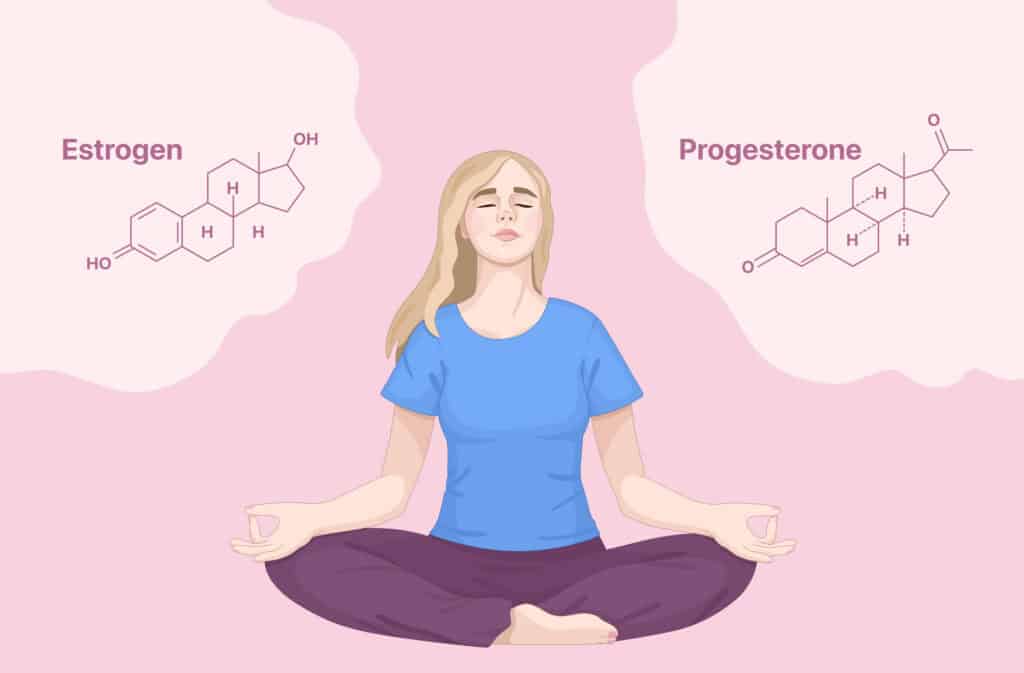
Let’s learn how two key female hormones – progesterone and estrogen – differ, how they affect different functions, and why they matter.
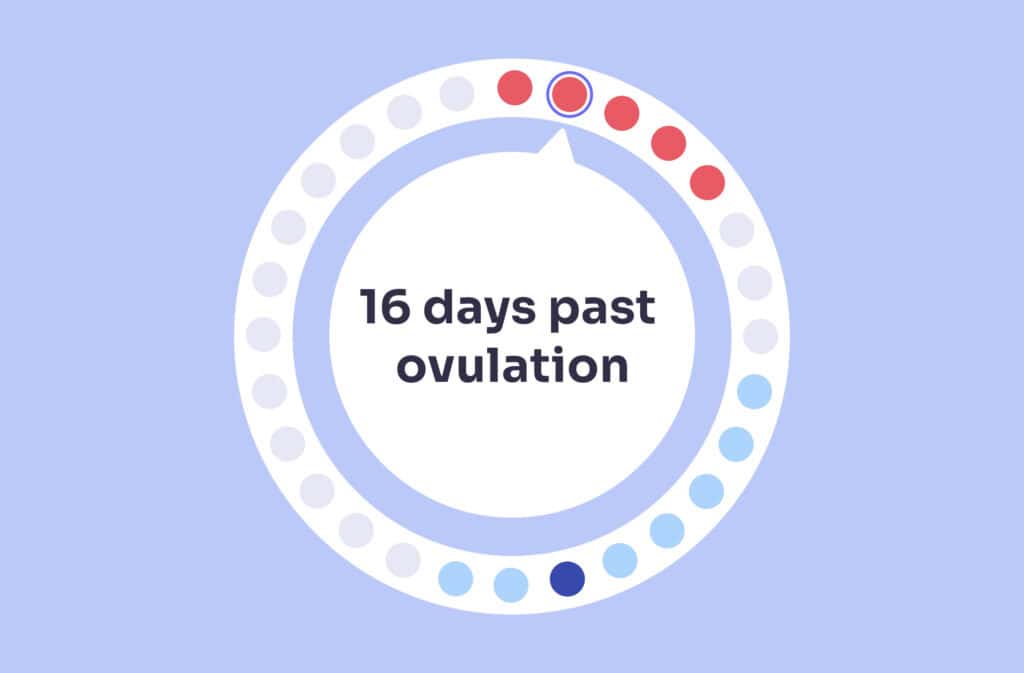
Learn about symptoms at 16 days past ovulation (16 DPO) and how to accurately test for pregnancy if your period is missed. Discover what happened in your body. Expert advice from Femia.

Explore the Candida cleanse diet, including foods to eat and avoid, a 7-day meal plan, and tips to support gut health. Discover how to detox Candida naturally.

